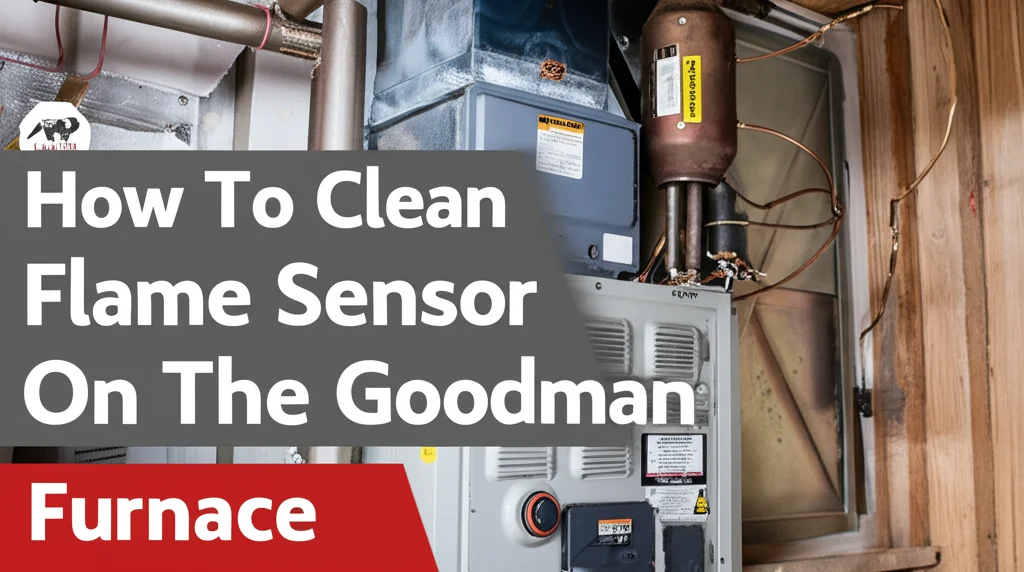· Home Improvement · 7 min read
How To Clean Igniter On Gas Furnace

A Warm Home Starts With A Clean Igniter: How To Clean Your Gas Furnace Igniter
Have you noticed your gas furnace taking longer to ignite, or perhaps clicking repeatedly without ever catching? A dirty igniter is often the culprit. Don’t worry, you don’t necessarily need to call a professional right away. Cleaning the igniter on your gas furnace is a relatively straightforward DIY project that can save you money and restore comfortable heating to your home. This article will guide you through the process, step-by-step, ensuring your furnace operates safely and efficiently. We’ll cover everything from safety precautions to the best cleaning methods, and even troubleshooting tips.
Takeaway:
- Always disconnect power before working on your furnace.
- Regular cleaning prevents buildup that hinders ignition.
- Gentle cleaning with the right tools is key to avoid damage.
- If problems persist, consult a qualified HVAC technician.
What Does a Gas Furnace Igniter Do?
The igniter is a crucial component of your gas furnace. It’s responsible for heating up and igniting the gas, which then warms your home. Over time, dust, debris, and carbon buildup can accumulate on the igniter, reducing its ability to heat up sufficiently to ignite the gas. This results in a delayed ignition, repeated clicking sounds, or even a complete failure to ignite.
Safety First: Preparing to Clean Your Furnace Igniter
Before you even think about touching your furnace, safety is paramount. Gas furnaces involve electricity and flammable gas, so taking precautions is non-negotiable. Ignoring these steps could lead to electric shock, gas leaks, or even a fire.
- Turn Off the Power: Locate the circuit breaker that controls your furnace and switch it off. Double-check that the furnace is completely powered down.
- Shut Off the Gas Supply: Find the gas shut-off valve near the furnace and turn it to the “off” position. This prevents gas from flowing during the cleaning process.
- Allow to Cool: Give the furnace ample time to cool down completely before you begin. A hot igniter can cause burns.
- Gather Your Supplies: You’ll need a screwdriver, a small brush (a toothbrush works well), a vacuum cleaner with a hose attachment, and possibly some fine-grit sandpaper.
- Read Your Furnace Manual: Your furnace manual contains specific instructions and safety guidelines for your model. Refer to it before starting.
Accessing the Igniter: Opening Up Your Furnace
Now that you’ve taken the necessary safety precautions, it’s time to access the igniter. The exact process will vary depending on your furnace model, but here’s a general guide. Remember to consult your furnace manual for specific instructions.
- Remove the Access Panel: Most furnaces have an access panel that allows you to view and work on the internal components. Use a screwdriver to remove the screws securing the panel.
- Locate the Igniter: The igniter is typically a small, ceramic or silicon carbide component located near the gas burner. It often looks like a small, glowing rod or a flat, rectangular piece.
- Identify the Wiring: Take note of how the wires are connected to the igniter. You might want to take a picture for reference during reassembly.
- Disconnect the Wiring (Carefully): Gently disconnect the wires from the igniter. Be careful not to damage the wires or the connectors.
- Consider the Burner Assembly: In some cases, you may need to partially remove the burner assembly to gain better access to the igniter. Again, consult your manual.
Gentle Cleaning: Removing Debris From the Igniter
With the igniter accessible, it’s time for the cleaning process. The goal is to remove any dust, debris, or carbon buildup without damaging the delicate igniter. Harsh chemicals or abrasive tools are a definite no-no.
- Vacuum First: Use the vacuum cleaner with the hose attachment to gently remove any loose dust or debris from the igniter and surrounding area.
- Brush Away Remaining Debris: Use a small brush, like a toothbrush, to gently brush away any remaining dirt or carbon buildup. Be very gentle to avoid breaking the igniter.
- Fine-Grit Sandpaper (If Necessary): If there’s stubborn carbon buildup, you can very carefully use a piece of fine-grit sandpaper (400 grit or higher) to gently rub away the deposits. Apply minimal pressure and avoid scrubbing aggressively. If you’re unsure, skip this step.
- Avoid Liquids: Do not use water or any cleaning liquids on the igniter. This can cause corrosion or damage.
- Inspect for Damage: While cleaning, carefully inspect the igniter for any cracks, breaks, or other signs of damage. If you find any damage, the igniter will need to be replaced.
Reassembly and Testing: Putting It All Back Together
Once the igniter is clean, it’s time to reassemble the furnace and test its operation. Take your time and follow the steps in reverse order.
- Reconnect the Wiring: Carefully reconnect the wires to the igniter, ensuring they are securely attached. Refer to the picture you took earlier if needed.
- Reinstall the Burner Assembly (If Removed): If you removed the burner assembly, carefully reinstall it, ensuring all components are properly aligned.
- Replace the Access Panel: Reattach the access panel and secure it with the screws.
- Turn On the Gas Supply: Slowly turn the gas shut-off valve back to the “on” position.
- Restore Power: Flip the circuit breaker back on to restore power to the furnace.
- Test the Furnace: Turn on your thermostat and observe the furnace as it goes through its ignition cycle. It should ignite quickly and smoothly. If it still clicks repeatedly or fails to ignite, there may be another issue.
Troubleshooting: What If Cleaning Doesn’t Fix the Problem?
If cleaning the igniter doesn’t resolve the ignition issue, don’t panic. Here are a few things to check:
- Gas Supply: Ensure the gas supply is fully turned on.
- Flame Sensor: A dirty flame sensor can also prevent ignition. It’s located near the burner and may need cleaning.
- Gas Valve: A faulty gas valve may not be supplying enough gas to the burner.
- Control Board: A malfunctioning control board can cause a variety of issues, including ignition problems.
- Professional Help: If you’ve checked these things and the furnace still isn’t working, it’s time to call a qualified HVAC technician. Don’t attempt repairs you’re not comfortable with.
Frequently Asked Questions (FAQs)
Q: How often should I clean my furnace igniter?
A: It’s generally recommended to clean your furnace igniter at least once a year, ideally before the heating season begins. If you notice ignition problems, clean it more frequently.
Q: Can I use steel wool to clean the igniter?
A: No, absolutely not. Steel wool is abrasive and can damage the igniter. Use a soft brush or fine-grit sandpaper very gently.
Q: What if the igniter is cracked or broken?
A: A cracked or broken igniter must be replaced. Do not attempt to repair it. Contact an HVAC technician for assistance.
Q: Is it normal for the igniter to glow for a few seconds before igniting the gas?
A: Yes, it’s normal for the igniter to glow for a few seconds as it heats up. However, if it glows for an extended period without igniting the gas, there may be a problem.
Q: Can a dirty air filter affect the igniter?
A: Yes, a dirty air filter can restrict airflow, causing the furnace to work harder and potentially leading to carbon buildup on the igniter. Regularly changing your air filter is crucial for furnace efficiency and longevity. You can learn more about maintaining your home’s air quality by reading about how to clean your home’s air ducts https://www.beacleaner.com/how-to-clean-basement-rafters/.
Keeping Your Home Warm: The Importance of Furnace Maintenance
Cleaning your furnace igniter is just one part of maintaining a healthy and efficient heating system. Regular maintenance can prevent costly repairs and extend the life of your furnace. Remember to schedule annual professional inspections and tune-ups. A well-maintained furnace not only provides reliable heat but also improves indoor air quality and reduces energy bills. Don’t forget to also keep your floors clean! A clean home is a happy home, and that includes maintaining your flooring. You can find helpful tips on cleaning various floor types here: https://www.beacleaner.com/how-to-clean-vinyl-plank-flooring/. By taking proactive steps to care for your furnace, you can enjoy a warm and comfortable home for years to come.




